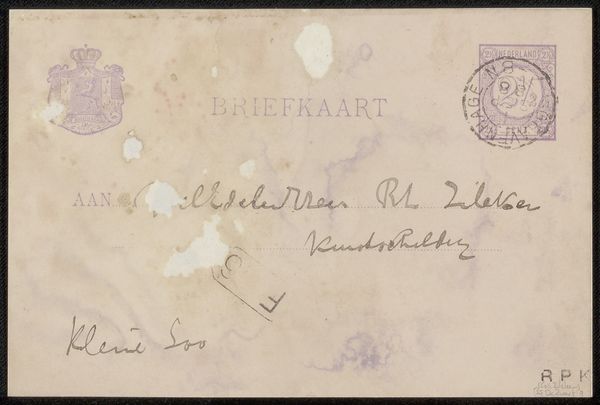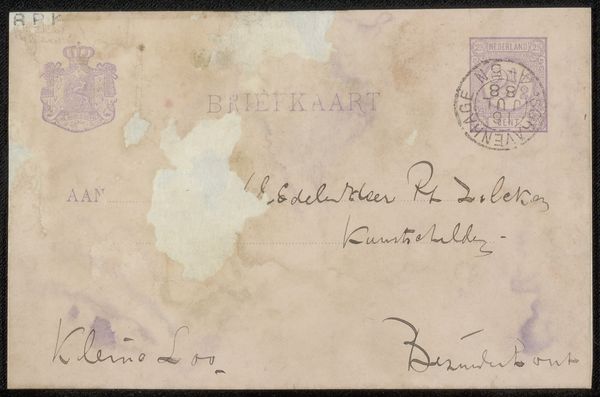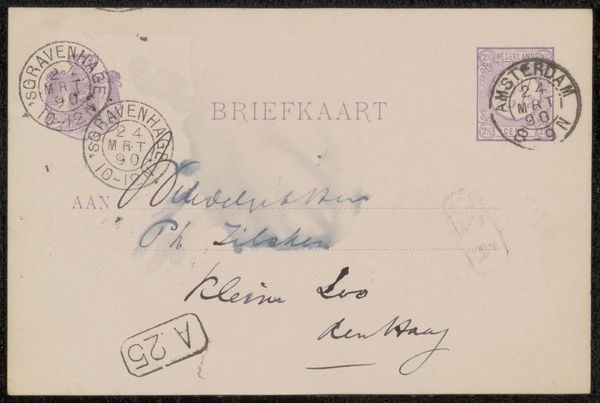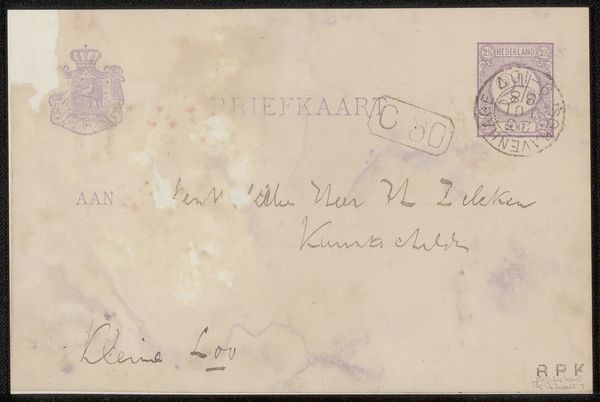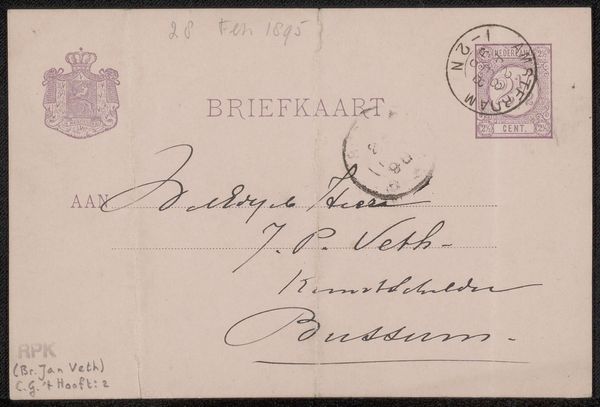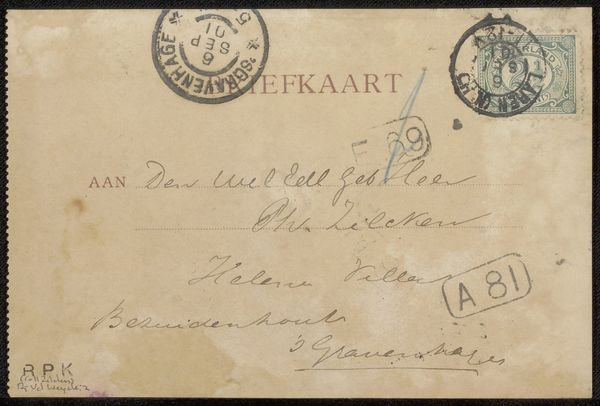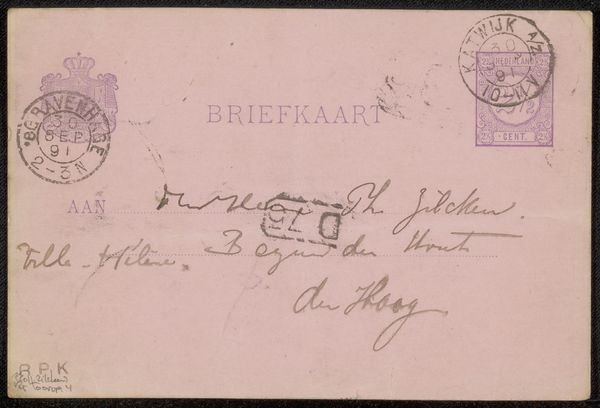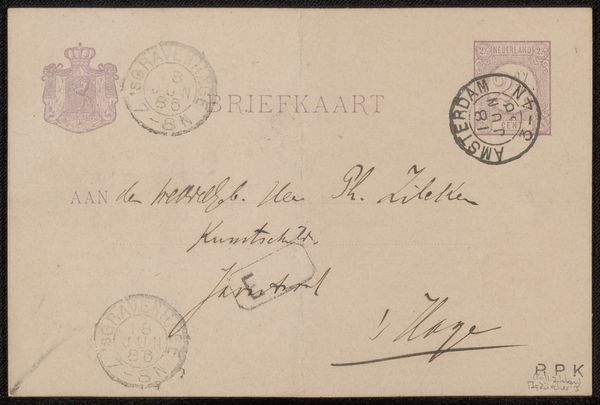
drawing, paper, ink, pen
#
drawing
#
pen sketch
#
paper
#
ink
#
pen
#
watercolor
Copyright: Rijks Museum: Open Domain
Editor: This is a piece called "Briefkaart aan Philip Zilcken" by Willem de Zwart, created before 1888. It’s an ink and watercolor drawing on paper, essentially a pen sketch on an old postcard. What immediately strikes me is its vulnerability, with those stains contrasting against the neat handwriting. What do you see in it? Curator: I see the cultural role of correspondence at that time. Before telephones became ubiquitous, postcards were vital for communication. Consider the postal infrastructure implied here: the Dutch coat of arms, the pre-printed "BRIEFKAART," and the postmark – all signifying a state-sanctioned network connecting individuals. Who was Philip Zilcken in the art world? Editor: That’s interesting. I hadn't considered the infrastructure aspect. I don’t know, actually; that’s a great question. Curator: Zilcken was an artist, critic and printmaker with international connections. It makes me wonder what function these brief words fulfilled. It reads, across the center in a very thin scrawl ‘Van wie dat adres’ which roughly translates to “from whom is this address?” - indicating it was merely utilitarian in its function, and that visual economy emphasizes a reliance on these postal services for social and artistic exchange. It seems like this simple address highlights this art of exchange more than just communicating a single purpose. Editor: So, even a seemingly simple object like a postcard can reveal so much about communication and social networks of that era? Curator: Exactly! It prompts questions about the relationship between de Zwart and Zilcken, the role of artistic networks, and the socio-political context that enabled their exchange. Even stains mark it. The stains can symbolize chance encounters, imperfections in a formalised method - something tangible for us in viewing art through social interaction. Editor: That gives me a whole new appreciation for this piece. Curator: And me too! It is nice to slow down and acknowledge what things like simple gestures on postcards meant for human exchange, it changes the viewing experience and acknowledges what things of our current daily exchanges might tell others centuries down the line.
Comments
No comments
Be the first to comment and join the conversation on the ultimate creative platform.

